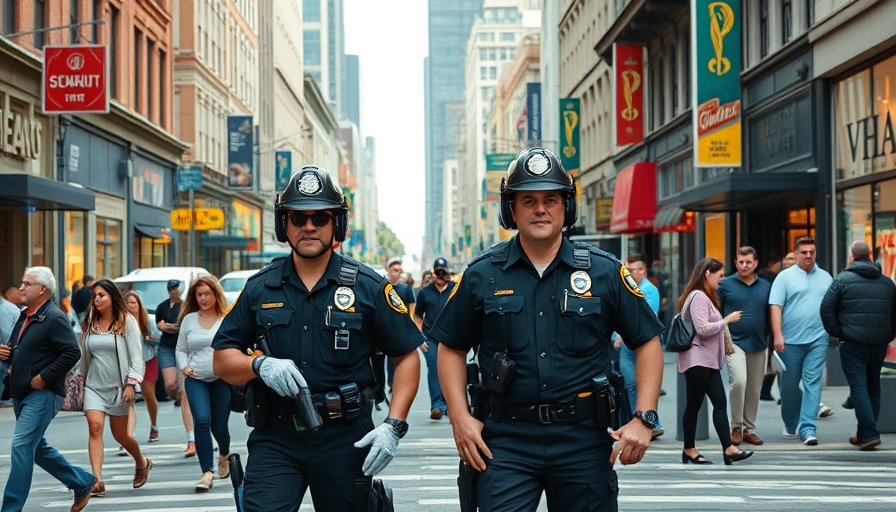
Why 16th Street Plaza Is a Microcosm of Urban Tension
The ongoing contrasts between 16th Street and nearby 24th Street encapsulate a wider struggle within urban spaces across America. In one corner, the presence of law enforcement aims to maintain order; in the other, local vendors create vibrant community interactions. As parents, adults, and community members walk the streets of San Francisco, these differing fates speak volumes about the city's approach to public safety and community needs.
Understanding the Community Impact of Police Presence
Reports indicate that the increased police activity at 16th Street Plaza aims at reducing crime but also raises vital questions about community dislocation. The attempts to clear sidewalks have not only diminished foot traffic but also adversely impacted individuals who rely on the public space to sell goods and find clarity amidst chaos. This situation elicits critical discussions about what ‘public safety’ truly means and for whom it is designed.
A Tale of Two Streets: Exploring Displacement
The stark differentiation between 16th and 24th Streets illustrates the palpable tension in community dynamics. While active police presence may deter certain behaviors, it also pushes vulnerable populations into less visible areas, suggesting a possible displacement rather than a solution to the root causes of issues facing areas like the Mission District. Understanding these narratives provides parents and other community advocates the tools to engage in deeper discussions about local governance and public policy decisions.
Safety or Suppression? The Dilemma of Urban Governance
The contrasting scenes provoke an essential question: Is the heavy police presence a safeguard for local businesses and families, or merely a heavy-handed approach to societal issues? Many voices in city council have pushed for balance, advocating for measures that focus on mental health and housing. Knowing the specific challenges at 16th and Mission can empower individuals to participate in local movements aimed at fostering a safer, more inclusive San Francisco.
Future Outlook: What Lies Ahead for the Mission District?
Residents look towards future changes with a cautiously optimistic eye. Recent discussions in city council hint at an increased emphasis on community-led initiatives that prioritize equity, mental health services, and alternative safety measures. For residents and businesses in the Bay Area, this could signal a shift away from traditional policing tactics.
Conclusion: The Importance of Community Engagement
For parents and community members alike, staying informed on local developments is crucial in shaping the future of neighborhoods. Awareness and involvement can galvanize change, allowing community members to advocate for more nuanced solutions that consider the diverse needs of the Mission District. Your voice matters; become part of the conversation about providing a balanced approach to urban safety.
 Add Row
Add Row  Add
Add 




Write A Comment